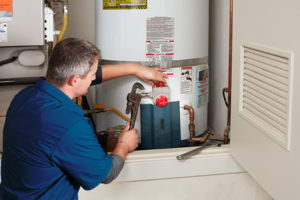Water heaters problems could be of different types. These include issues such as improper water temperature, leakages, discoloration in the water, bad smell, and noise. If you have ever faced any similar issues it would be wise to follow some troubleshooting before taking it to a repair center. You may get your water heater running back again before spending much on the service charge and electrician visit.
Heating elements in the electric heater can also cause issues and make it fail to run efficiently. However, replacing it with a new one would be a too early decision. Follow these DIY tips in the article, these could help your water heater function again, and check the trueindianreview site if you feel your water heater does not work after following the below tips.
How to repair water heater if it stops working:
Before we begin, there are certain tools that you may need to keep on your side such as;
- A Screwdriver

- Needle-nose pliers
- Voltage tester
Turn off the power before you begin with the troubleshooting. Safety is a must before following any DIY repair work.
- Heating elements:
If your water heater has stopped giving hot water, there could be an issue with your heater element. Turn off the power and remove the access covers that are fixed on the site of your water tank. Locate the elements that could be near the insulation. Check if the element is defective by performing a test. Get it replaced with a new element if found defective.
- Balance the thermostat:
There is also a possibility of a defective thermostat. Your water heater thermostat should be adjusted in the range between 90 and 150 degrees Fahrenheit. Check if your thermostat is tripped; if yes, both thermostats have to be adjusted with the same settings. There should be continuity between the upper and lower thermostats.
- Remove the plates:
Test the wires and plates. If your tester doesn’t light up while holding the tester against the metal of the water heater, it’s safe to perform the test on the elements. You may not be able to read the voltage while testing the wires if those are covered with metal conduit. Thus, you will have to remove the metal thermostat cover which is usually on the side of the water heater.
- Check for short circuits:
To use the tester with comfort, clip the alligator to either of the element screws. Touch the tester to the element of the mounting bracket. Repeat the same test on the other screw. If in either of the test, your tester lights up, it means there is a short. Replace the element and your water heater should be running fine.
- Replace the elements:
In case of any damage to the element, you may have to replace it with a new one of the same wattage. The watt details would be either mentioned on the label of your element or the nameplate of the water heater. In case, the details are faded, you may also find the watts online by entering your water heater’s model number.
In case you are still unsure about the water heater issue, you can follow some more troubleshooting tips by searching for your model number online.
